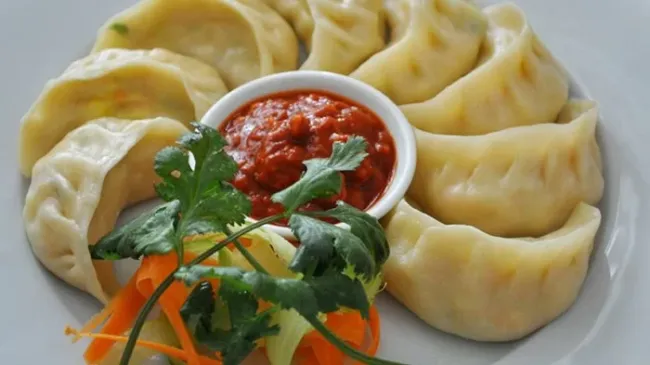Exploring Tibetan Momo: A Culinary Journey into the Himalayas
Tibetan momo, the beloved steamed dumplings, are much more than a dish—they are a cultural symbol of the Himalayas. Let's dive into their history, craftsmanship, and significance, offering a window into the heart of Tibetan culinary traditions.
The Origins of Momo
Momo’s history is intertwined with ancient trade routes. While their roots are distinctly Tibetan, the concept is believed to have been inspired by Chinese jiaozi, likely introduced through the Silk Road or by Tibetan traders. Over time, Tibetans adapted the recipe to their local ingredients, incorporating yak meat and hardy mountain spices, making momo a symbol of resilience. During festivals like Losar (Tibetan New Year), making momo becomes a communal activity, representing unity and prosperity. In monasteries, they are often offered to deities, blending sustenance with spirituality.
The Art of Making Momo
1. The Dough
The dough for momo is a simple blend of wheat flour and water, kneaded to a smooth, elastic consistency. In remote regions, barley flour is sometimes used, giving the dough a nutty flavor. Resting the dough for about 30 minutes is key to achieving the right texture for delicate, thin wrappers that won’t tear during steaming.
2. The Filling
- Meat Fillings: Yak, beef, or lamb is minced with fat for juiciness, then mixed with garlic, ginger, and Himalayan spices like cumin, coriander, and Sichuan pepper.
- Vegetarian Fillings: Potatoes, cabbage, or chhurpi (local cheese) are seasoned with turmeric and asafoetida. Some modern variations use tofu or lentils.
3. Pleating
The signature half-moon shape is achieved by folding the dough with 12–18 pleats, a skill passed down through generations. Regional variations include the ornate, purse-like pleats of Lhasa momo and the sturdier, thicker wrappers used by nomadic communities.
4. Steaming
Momo are traditionally steamed in bamboo baskets, but modern kitchens often use metal steamers. A light brush of oil prevents sticking, and steaming for 15 minutes ensures tender fillings and translucent wrappers.
Regional Variations of Momo
- Kothey Momo: These are pan-fried after steaming, giving them a crispy base.
- Thenthuk Momo: Served in a noodle soup, making for a hearty, warming meal.
- Sweet Momo: These are dessert versions filled with brown sugar, coconut, or droma jam, often enjoyed during celebrations.
- Nepali Influence: In Nepal, momo are spiced with timur (Nepalese pepper) and served with achar (pickle).
Serving Momo: A Cultural Experience
Momo are typically served with sepen, a spicy dip made from roasted tomatoes, chilies, and cilantro. They are often paired with:
- Butter Tea: A rich, salty beverage that balances the spices of the momo.
- Chang: A fermented barley beer, commonly shared during festive occasions.
In Tibetan culture, elders are served first, and it is considered impolite to leave a dumpling uneaten. Street vendors often pair momo with sho (Tibetan coleslaw) for added crunch.
Momo in the Modern World
Tibetan diaspora communities have helped spread momo around the globe, leading to fusion variations like kimchi-filled dumplings in Seoul and vegan versions in Brooklyn. However, traditionalists argue that the essence of momo lies in its simplicity—the harmony of dough, filling, and steam. In Lhasa, restaurants like Tashi’s Kitchen preserve time-honored recipes, while Himalayan cafes worldwide use locally sourced yak meat to stay true to the tradition.
Why Momo Matter
Beyond their delicious flavor, momo are a nutritional powerhouse, providing protein, energy-sustaining carbs, and spices that stimulate circulation—especially important for high-altitude living. But more than their practicality, momo embody Tibetan hospitality. As the saying goes, “A home without momo is like a sky without stars.”
Bringing Momo to Your Kitchen
Mastering the pleating technique takes time, but here are some tips to get you started:
- Use store-bought wrappers for convenience.
- Seal the edges with water to prevent the dumplings from bursting.
- Experiment with fillings, but stay true to the balance of spices.
For an authentic recipe, check out The Tibetan Kitchen by Tsering Yangzom, which combines stories and traditional flavors from the Plateau.
Final Thoughts
Tibetan momo are more than just food—they are a celebration of history, culture, and connection. Whether enjoyed in a lively market in Lhasa or prepared in your own kitchen, momo remind us to savor life’s simple pleasures.
Tashi delek! (Wishing you good luck and blessings on your momo-making journey!) 🌄🥟
